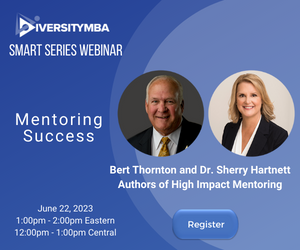Most of us are familiar with the concept of IQ — intelligence quotient — and its measurement through specific testing instruments. More recently, it has been established by respected researchers such as Howard Gardner that there are multiple intelligences that represent unique and divergent talents not captured by traditional IQ tests. In fact, one of these alternate intelligences, measured by emotional quotient (EQ), has actually been proven to be more correlated with success in life than IQ, through the work of thought leaders such as Daniel Goleman.
Despite the expansion of thinking in this area, there has been no mention of a similar construct for a crucial element of professional and organizational success — leadership smarts. Most people would agree that if such a construct can be established, the subject of leadership can transform from a fuzzy, amorphous concept that is well-discussed but ill-defined, to a clearly crystallized, measurable skill that can be systematically assessed and enhanced.
This article will take the first step forward in endeavoring such a transformation by suggesting that such a construct to measure leadership intelligence already exists. It’s called leadership quotient (LQ), and this metric actually helps distinguish successful leaders from unsuccessful ones.
If such a construct exists, what might the mathematical equation for leadership quotient look like, and how might it be measured?
Let us begin to answer this question by asking ourselves a more fundamental question to which most of us can relate: When we think about the great leaders in our lives, what was it about them that caused us to follow them? Was it institutional power, positional influence, monetary leverage, personal charisma? All of the above? None of the above?
When we asked this question of people, some common themes emerged in their diverse answers. And, those themes can lead us to the mathematics and measurement of leadership. Here they are for your consideration and contribution.
First, most people said that they chose the leaders to follow, not the other way around. Followers pick leaders more so than leaders select followers. Free will and independent thinking makes it impossible to force anyone to follow through the mandates of an organization chart, though many leaders try to do so. Managers may be appointed, but leaders are elected.
Second, our respondents said that they picked the leaders they chose to follow through a
subconscious, instinctive process rather than a conscious, methodical one. And they did so not just because of the position the leader had, or the institution he or she represented, or the wealth he or she possessed, or the personality the person projected. Though those attributes did count in some way, they were secondary factors that represented other primary currencies that successful leaders had earned from the their followers at a deeper level.
Third, broad consensus emerged on three primary currencies that leaders need to earn from their followers, and the three key assets needed to be built to enable these currencies to be earned. Our respondents said that leaders they chose to follow earned credibility from them by delivering distinctive, consistent results, trust by building dependable, caring relationships, and respect by acquiring superior, relevant resources.
Think about that feedback for a bit. If, every time we followed a leader, we got the results we wanted, wouldn’t it make sense to follow that leader again? If every time we interacted with a leader, we trusted that he or she had our best interests at heart, wouldn’t we feel like following his or her lead? And if every time we heard a leader, the person seemed to have in-depth domain expertise, wouldn’t we respect his or her judgment enough to act on what we heard? I suspect your answers to all three of these questions would be yes.
So, how are these critical currencies of credibility, trust and respect earned, and the critical assets of results, relationships, and resources built? Therein lies the mathematics of LQ.
Resources are acquired by investing in competence — in the industry, company, organization, function, competition, customers, and the environment. In other words, by becoming smart about the things that matter. Most people call that intelligence quotient, or IQ.
Relationships are built by investing in character — work ethic, honesty, fairness, balance, humility, lifelong learning, empathy, passion, compassion. In short, by becoming a better person on the qualities that count. Most people call that emotional quotient, or EQ.
Results are delivered by investing in capabilities — visioning, communicating, coaching, motivating, influencing, negotiating, selecting, de-selecting, prioritizing, executing. Essentially, by becoming an effective person on the actions that accomplish. We call that execution quotient, or XQ.
And there you have it. The mathematics of leadership straight from the heads, hearts, and hands of those who really count – the unnamed many who choose to follow the privileged few on whom the mantle of leadership is bestowed. Sizeable specifically, improvable incrementally. The basic formula for finishing first in the fight for followers is this: LQ = IQ + EQ + XQ. Follow it, and beneficial results will begin to occur.








